Beautiful flowering shrubs, spirea are enthusiastic growers with woody or cane-like stems that benefit from an annual pruning.
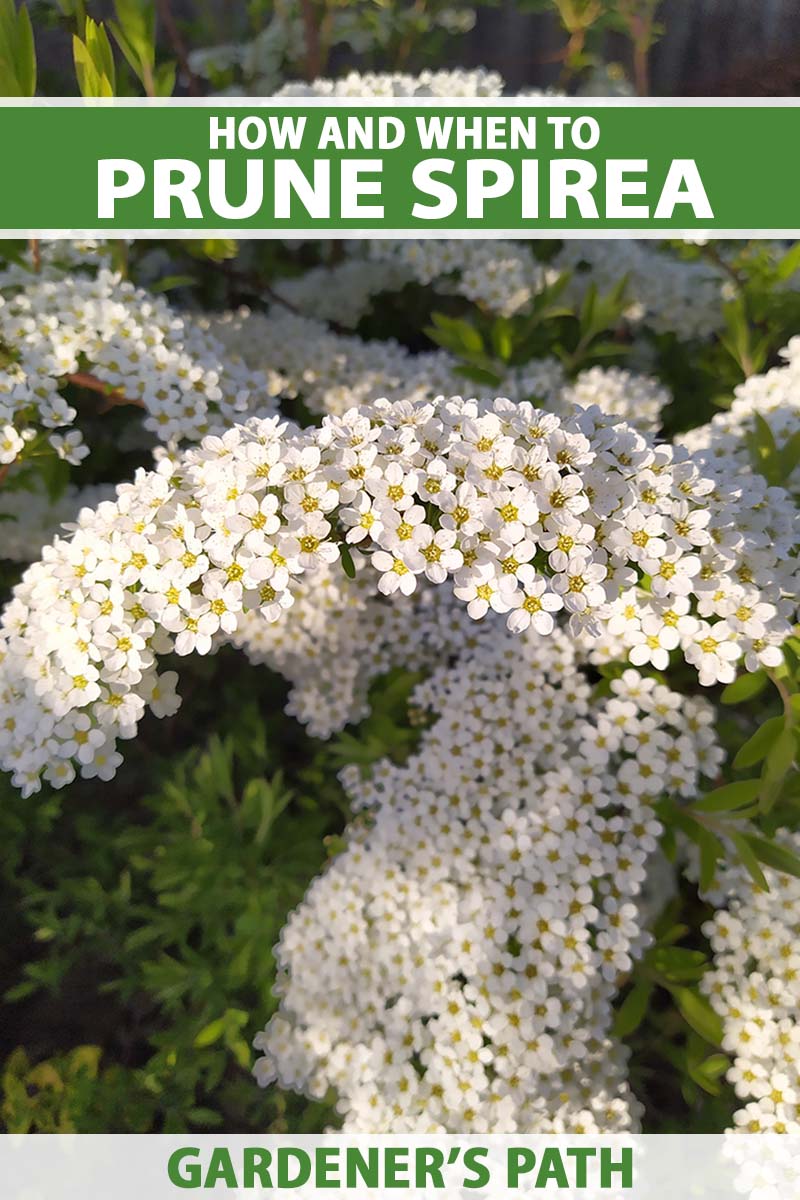
We link to vendors to help you find relevant products. If you buy from one of our links, we may earn a commission.
Pruning removes old and dead wood and produces new shoots for vibrant, youthful plants with full foliage, abundant clouds of flowers, and a manageable size.
It thins the plant’s mass and reduces the existing canopy, which improves air circulation and allows sunlight to reach the understory, resulting in dense mounds of growth.
And many of the popular cultivars in the Spiraea genus also benefit from a second trim after flowering to encourage a light rebloom and pretty new foliage, and to check rambunctious growth.
The common garden types vary in size and shape, some with a mounded or rounded form, others with graceful, arching branches. But they all feature masses of delightful, tiny flowers grouped in clusters, flat-topped corymbs, or panicles.
The foliage is delicate and often lacy, giving at least two, and often three seasons of colorful interest.
Many of the newer cultivars have luminous, color-changing leaves that emerge in shades of chartreuse, copper, gold, orange, and scarlet then morph into various hues of green.
And most put on a pretty autumn show as well when leaves turn deep shades of burgundy, copper, orange, scarlet, and purple.
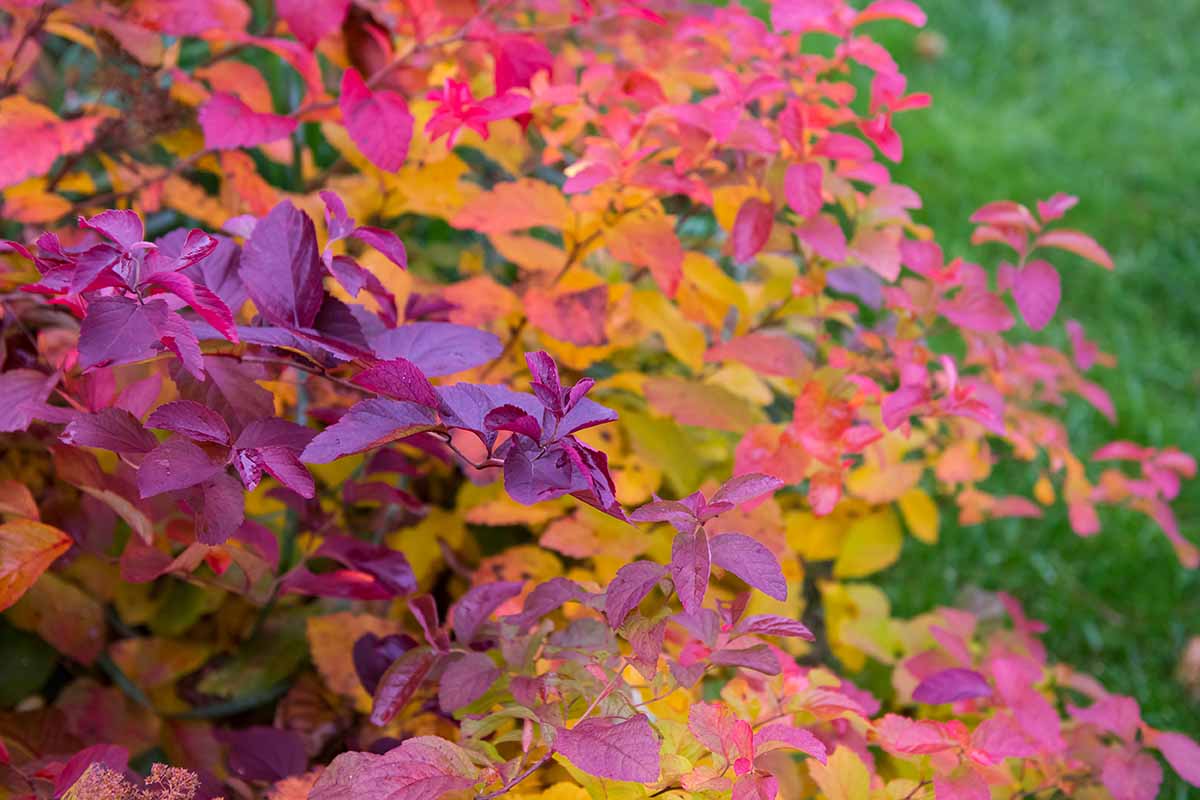
The pretty flowers are attractive to vital pollinators like bees and butterflies, but deer tend to leave them alone.
Unique shrubs, these cold-hardy plants put on an outstanding multiseason display but need you and your garden snips to look their best!
To keep your plants in top form, join us now for a look at how to prune spirea for sumptuous shrubs.
Here’s what we’ll cover:
What You’ll Learn
When to Prune Spirea
Deciding when to prune spirea depends on the type you have. These plants may be either spring- or summer-flowering.
The spring blooming, garland types, like bridal wreath (S. prunifolia), flower on old wood. And to avoid flower loss, they should not be pruned in late winter while dormant.
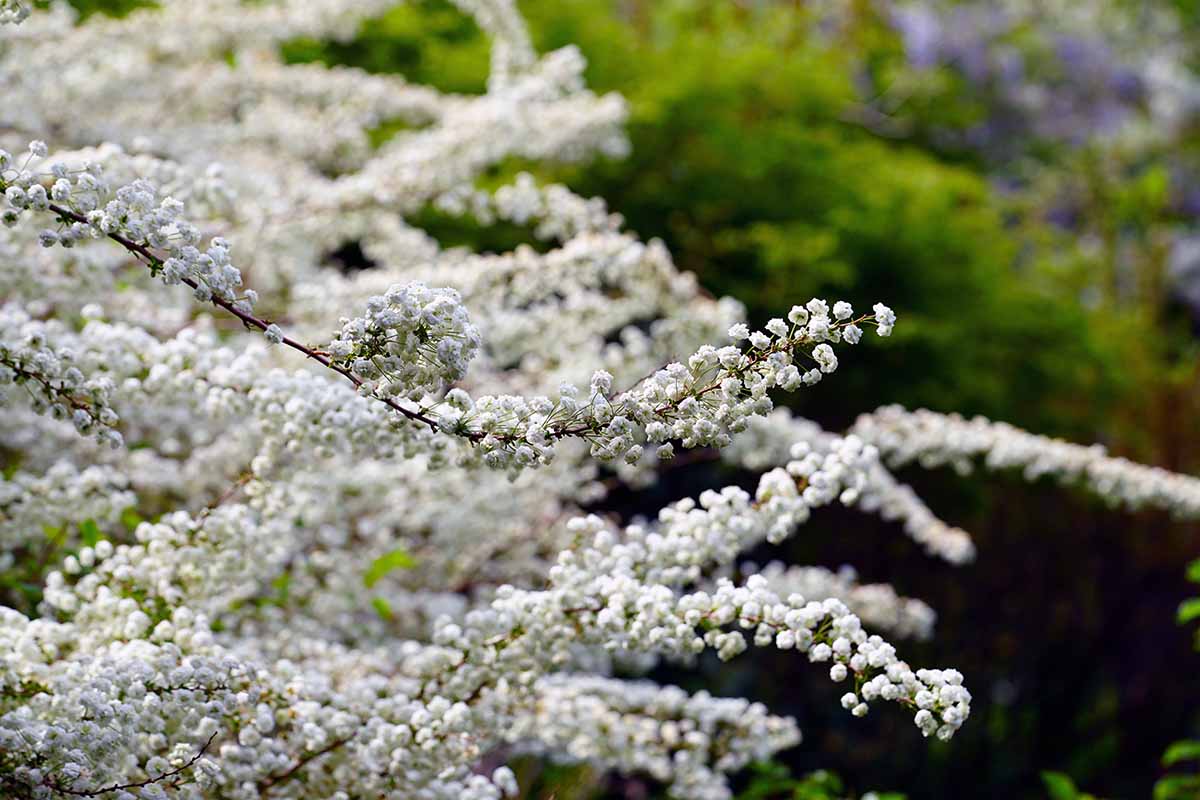
Instead, these plants get a cut right after flowering or at the same time as deadheading.
Summer-flowering types such as the shrubby S. japonica bloom on new wood. These are best cut back when they’re still dormant, typically in late winter to early spring depending on your region.
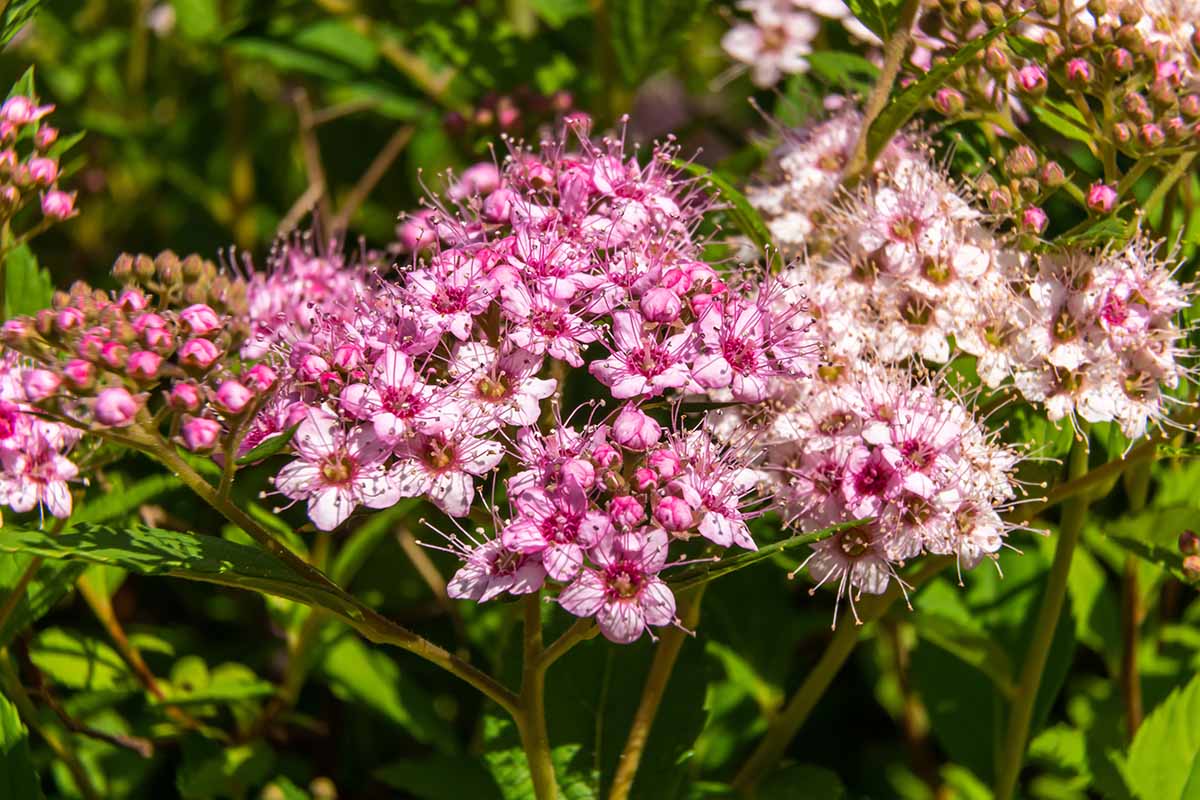
Beautiful birchleaf spirea (S. betulifolia) technically flowers in late spring during May and June – but buds form on new growth so it’s cut back as a summer-flowering type in late winter.

While plants are still dormant, this is the time to be fairly aggressive, removing dead or damaged branches and reshaping shrubs.
A second, lighter clipping is done right after flowering, when plants are deadheaded and lightly trimmed.
And if you find that an annual prune and deadheading aren’t enough to keep summer-flowering shrubs in check, trim and shape at any time after flowering to restore order.
Let’s take a closer look at the requirements for each type, depending on bloom time.
Spring-Flowering Types
For a full, bud-to-bloom season, spring-flowering shrubs need pruning as soon as flowers fade and finish.
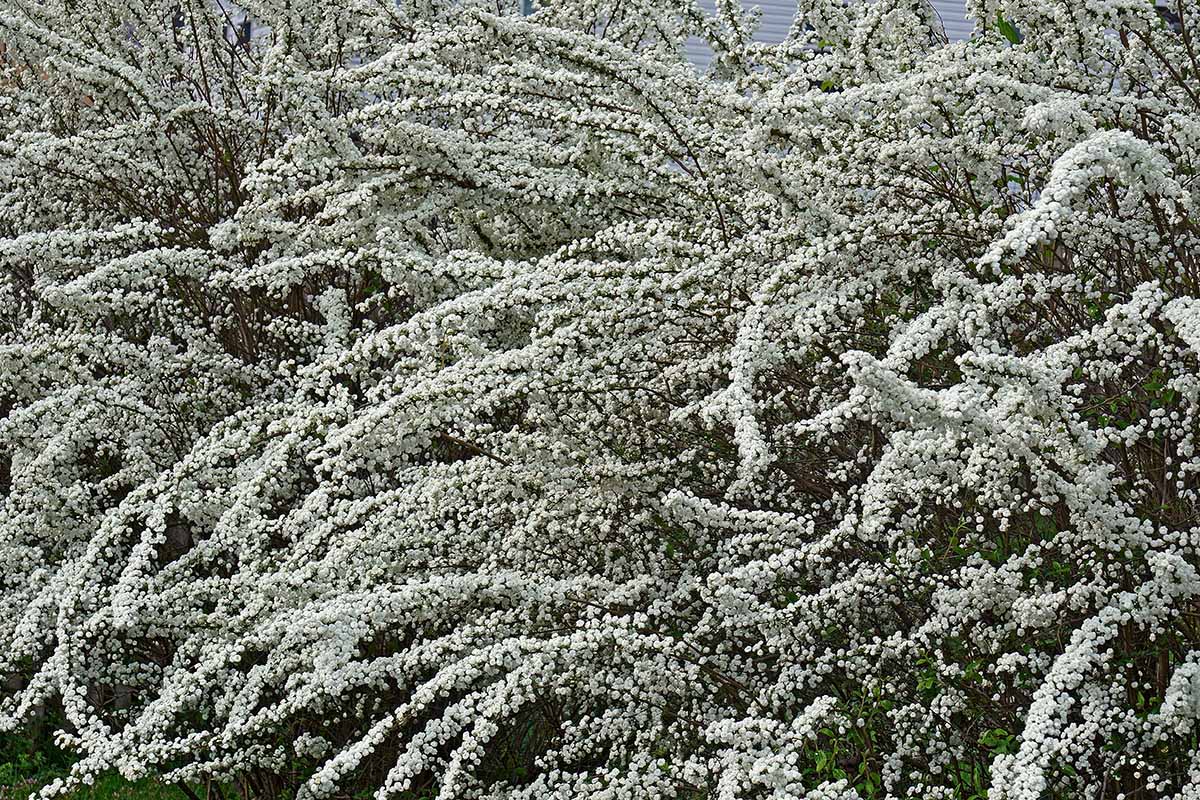
Pruning promptly allows time for new branches to grow and set buds for the following season, resulting in full, lush plants with abundant flowers.
Use clean, sharp shears or pruners to reduce the overall size by up to one-third.
Choose an overgrown cane and follow it back to the trunk, cutting at the stem collar close to the main trunk.
Cutting close to the trunk is important, because if the cane is lopped anywhere above the collar, it’ll sprout clusters of new growth just below the cut – which can become tangled and top heavy, and possibly cause damage.
Suckering is also common with S. prunifolia. Remove any unwanted suckers by cutting stems below the soil line.
Bridalwreath and related cultivars can also be tidied in late winter to early spring, but only to remove dead or damaged stems. Remember, flowers form on old wood and pruning at this time for this type results in flower loss.
Summer-Flowering Types
Summer-flowering shrubs bloom on new wood and can be given a hard prune in late winter to early spring to reduce, reshape, and resize.
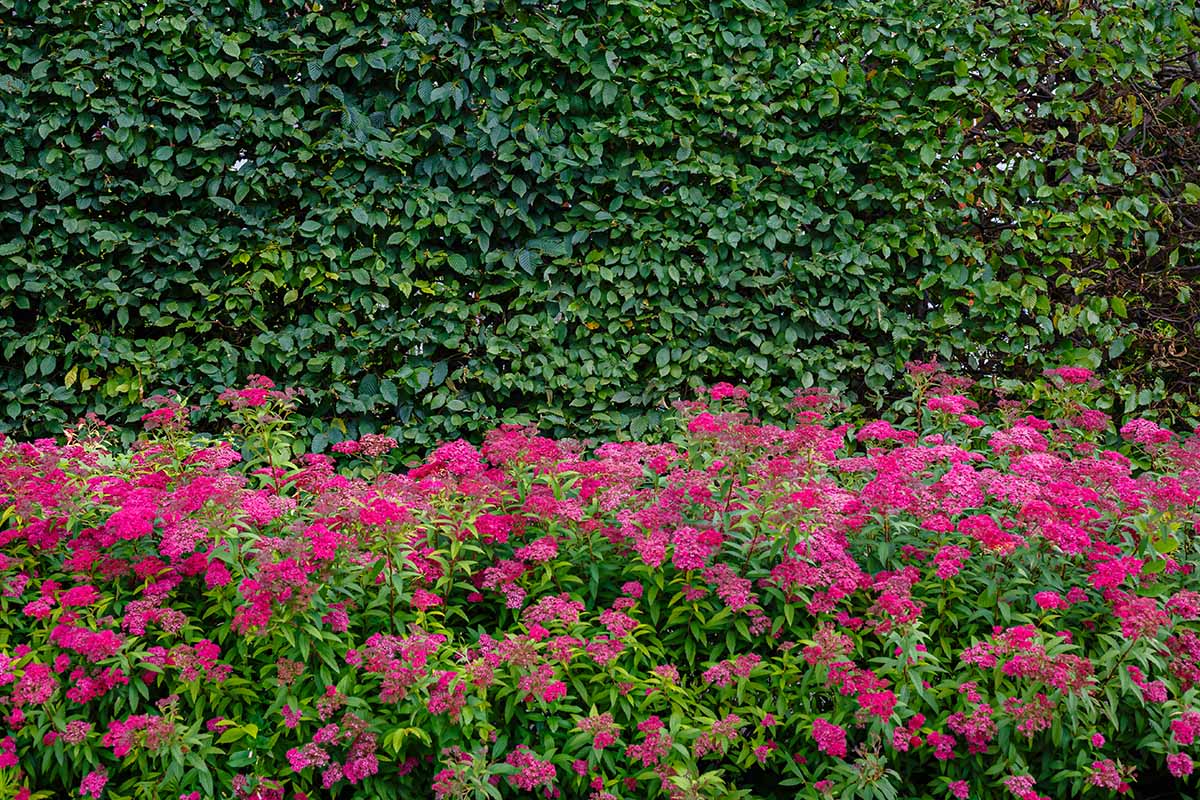
When pruning at this time, watch for stems of new growth – often in bright shades of copper, lime green, orange, and red – and take care to avoid damaging them.
Use clean, sharp garden shears or hand pruners to cut away and remove any remaining flowerheads from the previous season.
Remove all dead, broken, or straggly branches, cutting cleanly at the stems’ base.
Remove a ring of mature canes from around the outer edge of the base, cutting at soil level. Old, woody canes can block sunlight to the plants’ interior, choking out new growth and resulting in bare stems with little or no undergrowth.
Reduce the top by up to half the overall size. Use clean, sharp pruning shears to cut back the stems, creating a uniform shape as you go.
Care After Flowering
To tidy spring-flowering varieties without pruning, deadhead only the spent flowers, using clean, sharp garden shears or pruners to skim just above the foliage.
But if your shrubs need to be shaped or resized, this is the time to crop them as outlined above.
For summer-flowering plants, trim shrubs after blooms have faded to tidy up and encourage a light rebloom with colorful new foliage.
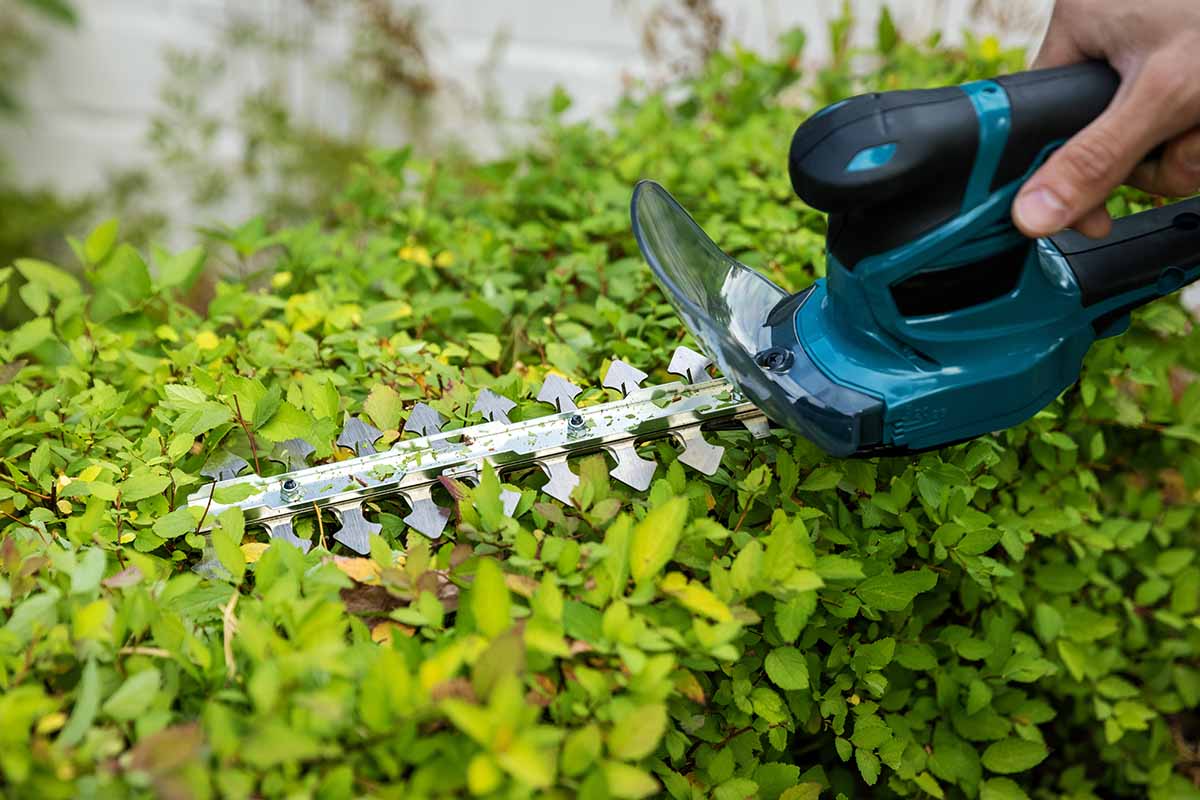
Use clean, sharp garden shears or pruners to remove spent flowers along with a few inches of foliage to restore an even profile.
Or remove up to one-third of the canopy to shape plants or sculpt into ornamental topiaries.

For a professionally rounded trim, use this landscapers’ trick:
Tie a rope around the shrub’s middle, lightly pulling the branches together. Cut straight across the shrub’s top above the rope. Release the rope and the shrub will have a nicely rounded form.
Rejuvenating Mature, Overgrown Plants
Mature plants that haven’t been maintained often develop an abundance of top growth, sparse flowers, and a tangle of dead and/or bare branches below the canopy.
A hard cutback clears out the messy jumble of canes and stimulates new growth in vibrant, tight mounds with thick foliage and abundant flowers.
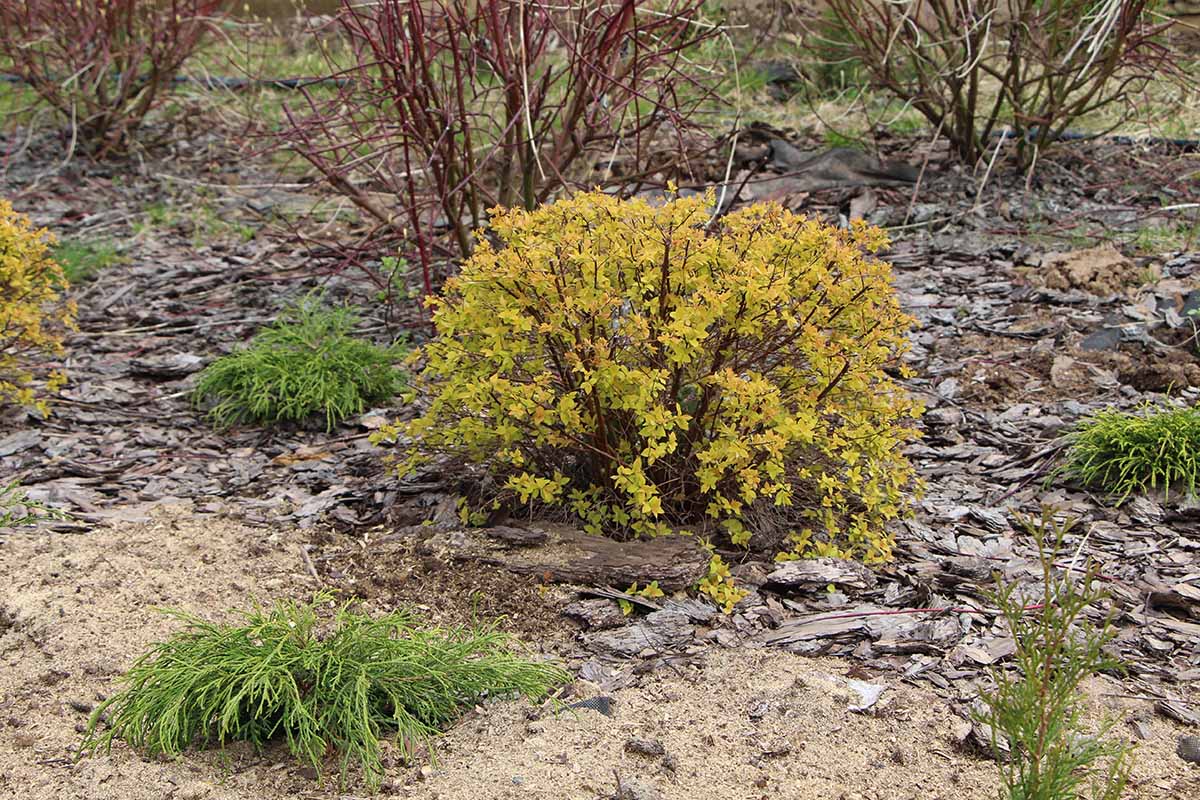
To rejuvenate both spring- and summer-flowering varieties, cut back hard in late winter to early spring, using clean, sharp garden snips or hedging shears. For overgrown bridal wreath, you may need to use a clean garden saw for the larger stems.
Remove a ring of outer canes at or just below soil level. Removing the outer canes helps to concentrate growth into a compact mound.
Cut back all remaining stems to one to two feet above the soil line.
Remove any dead wood and use a small hand rake to clean out debris from the plants’ interior.
Top dress the root zone with a two- to four-inch layer of organic matter such as aged compost or well-rotted manure.
Plants will produce new growth in spring and return to full size in just a couple of years.
Showy Shrubs
Spirea are enthusiastic growers that respond well to pruning, producing tightly formed, showy shrubs with pretty foliage and masses of flowers.

Prune the spring-flowering bridal wreath right after blooming. But wait until late winter to cut back the summer-flowering varieties.
And cut freely because it’s almost impossible to take too much wood if you follow the instructions outlined above!
If you have any questions about how to prune spirea, drop us a note in the comments section below.
And to learn more about growing and caring for spirea, have a read of these guides next:
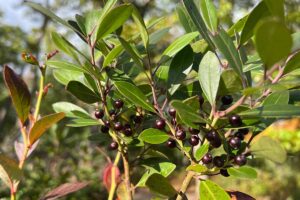
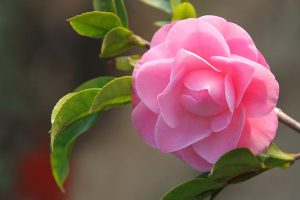

This was just the information I was looking for- very thorough! Thanks so much for taking the time to share your knowledge. My spirea will look fabulous next summer!
Thank you Nancy!
it appears my spireas are starting new shrubs on their own a short distance from the mother shrub. I don’t want multiple plant growing next to each other. Can I dig up the unwanted shrub or do I need to find where it’s growing from the mother plant and cut it off at the base. To me digging up those unwanted shrubs seems like an easier task. Thank you for all you tips and knowledge on your post.
Hi Terri, digging up the suckers typically severs any leader roots extending from the mother plant to prevent regrowth.
These vigorous plants can produce shoots annually, and fall removal may need to be part of your yearly maintenance. But the shoots pot up nicely for container growth too!
Thanks for your question.
Very informative, I have an app called picture this and it says the plant tolerates hard pruning but I needed to see what hard pruning of this plant looks like – you covered that very well. Thank you for that. So I have a question: Can I separate growth from the base of the plant? I don’t think the previous homeowner ever pruned it and it has a very large base and a bunch of dead branches throughout. Is it possible or desirable to cut/divide at root?
Hi Louise, glad you found the ariticle informative. And yes, you can dig up and divide the roots. Some years ago I had the same situation as you – an inherited, overgrown, and neglected shrub full of dead canes. In late winter, use a spade to dig out the entire root ball and a hatchet to chop through the larger taproots. With your hands, garden snips, saw, or hatchet, cut the root ball into thirds or quarters for easier handling. Remove all dead and damaged canes and trim the rootball, including main taproot, secondary roots, and fibrous roots by one-third… Read more »
Hello! My spirea van houtte has always produced abundant white flowers in spring and early summer. This year it has only the lower third with flowers. The top and upper sides produced buds which dried up and turned black instead of blooming. In every other respect it is a thriving healthy shrub six foot tall and trimmed to keep a uniform round shape. I trim off new shoots by hand, snapping them off when they poke up above the trimmed shape. I’m wondering what went wrong this year. We had a couple of late frosts right when the buds were… Read more »
Hi Daniel, sorry to hear about your flower troubles. From the manner in which only the top and upper sides were impacted, I suspect you might be right about the late frost – it makes sense that the lower areas are flowering as they’re a bit more protected. The only other cause I can think of would be a sever aphid infestation – but your healthy plant suggests this isn’t the case. I suggest pruning your shrub as usual, and your Vanhoutte should bounce back nicely. Should a late frost threaten in the future, toss some burlap or a frost… Read more »
I have my great grandmother’s Spirea they always bloom for Memorial Day ( in Michigan)
I am afraid that if I wait until late fall to prune them. They will not have their vibrant flowers for Memorial Day. The next year. Also I go to Florida in the winters so I might have to do them in October or early. November.. Well, that be a problem for me?
In the past, I have only taken off the top 5 or 6 inches. But I guess from what I’m reading. I should be taking him further down?
Hi Charlee, pruning in early November in Michigan should be fine, as your plants will be close to dormancy.
But, I suggest that you cover your shrub with burlap after cutting back to avoid damage from winter’s cold temperatures.
Also, you can try cutting them back double your usual amount this year, or 10 to 12 inches – I think you’ll be impressed with the amount of flowerheads produced from a harder pruning!
Thanks for asking
Hello! I live in North Texas and planted 4 double candy corn spirea in May 2022. 3 of them have thrived but a 4th has struggled to keep up with its siblings. It will seem robust but then fade to a scrawny mass of brown twiggy stems with some leaves and flowers. We had a horrific summer and drought in 2023 and I babied it with some regular applications of SuperThrive, which kept it alive. It rebounded pretty well but became scraggly again. All plants are near each other on the northeast side of the house — a combination of… Read more »
Hey LonestarBabs, I’m guessing all four plant get equal amounts of light and moisture, so for only one to be struggling makes me think it might have root knot nematodes. Your plant probably came home from the nursery with them and they’re most active in hot weather, which would explain why it starts out okay then fails later in the season. If this is the issue, pruning won’t help much, but won’t hurt either. I suggest a moderate pruning to all four shrubs in late winter for a balanced appearance. Also, applying a thick layer of compost in spring can… Read more »